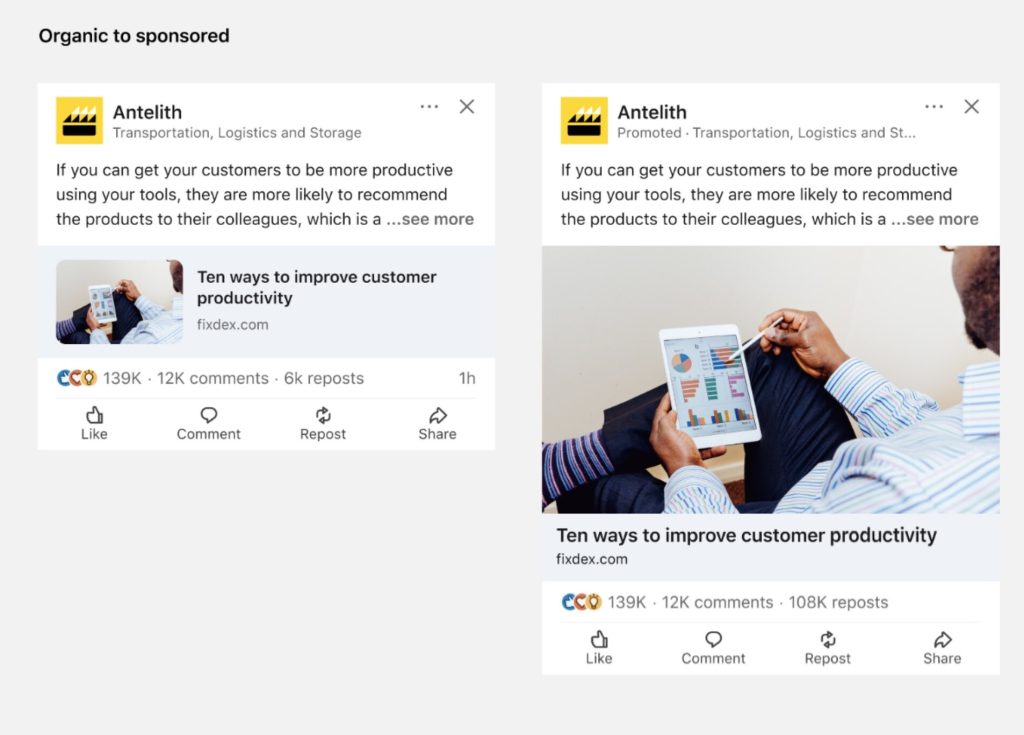A few months ago LinkedIn made a seemingly small but impactful change to feed posts. It reduced the size of link previews to third-party sites. While this adjustment can be viewed as a simple product update, it carries significant implications on how members leverage the platform moving forward. It’s only the start of change for the professional ecosystem. In coming months LinkedIn is shrinking the image size of ALL organic posts on the platform, whether posted natively or not.
Why would LinkedIn deteriorate their user interface in such a detrimental way? Today we’re covering why LinkedIn is making these changes, why it matters, and how these product updates highlight a fundamental misunderstanding of audience behaviour.

Why Is LinkedIn Shrinking Organic Content?
Let’s start off with the biggest question…why make the change at all? Like most business decisions, the reason LinkedIn is shrinking organic content is to increase profit. This occurs in two ways; increased time on site and the incentive of restored exposure.
Much like its competitors, LinkedIn has been actively looking for ways to keep users on their site longer. Reducing the size of third-party content, in theory, makes users less likely to click on it, keeping them on the platform. Increased scroll times lead to more ad placement opportunities, driving up revenue.
Second, by reducing the size of all organic content and shares of paid content, the platform is actively encouraging users to pay for visibility. Paid content has always played this role, but this is a dramatic escalation at the cost of organic presence. LinkedIn is banking on its users panic buying paid content to restore the same level of presence they previously had.
Hopping on the Bandwagon
LinkedIn is late to the game on this change, as similar steps have already been taken by its competitors to reduce third-party links. For example, X changed image previews for third-party links last October. Platforms like Instagram have never allowed users to link out from individual posts and have further vowed to reduce the reach of reposted content. Meanwhile Facebook now prevents the sharing of news content on its platform in multiple nations after government calls for compensation to news organisations.
So if others have already taken steps to reduce shared content, why does LinkedIn’s move feel like such a betrayal?
Audience Behaviour on LinkedIn
What this change demonstrates is a spectacular misunderstanding of audience behaviour. While LinkedIn started as a professionals platform, it’s evolved into so much more than a digital business card. It’s a storytelling ecosystem. Scrolling through the feed you’ll see users celebrate a new career, share the loss of a friend, and comment on a news story impacting their sector. We’ve slowly erased the line between personal and professional lives, introducing anecdotes that connect people regardless of their title. All of this happens organically to keep people connected, which is the whole point of joining the network.
Users also rely on third-party links to supplement the limitations of LinkedIn. These links drive to websites which capture better data, portfolios which showcase additional work, and breaking news stories which have yet to hit the LinkedIn algorithm. Users share third-party links because they suit our needs better than the current tools available on LinkedIn.
All of this is about to change. The vast majority of this storytelling is unpaid content, which will be deterred in favour of paid. Instead, feeds will be dominated by brands who have the resources to devote to sponsored media.
Why This Matters
These changes have the potential to dramatically impact the value of LinkedIn for a majority of users. For individuals, freelancers, and small businesses it could discourage LinkedIn as a means of self-promotion. These users might shift to text only posts, or refrain from sharing content altogether. If posts won’t get exposure, why post at all? They could also spend less time on the platform, should ads begin to dominate their experience.
Then there’s larger businesses, which could benefit from existing paid content strategies. With more exposure comes the potential for more success, that is, if users stick around to see it.
It’s interesting that LinkedIn would take such a huge gamble, dismissing the entire user experience to encourage further profit. What’s left to be seen is whether this gamble will pay off.